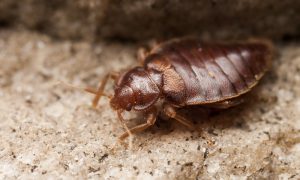How Does A Bed Bug Reproduce?
When we think of bed bugs we wonder how they spread so quickly, or why they show up in such big numbers once they infest a home or building? It has everything to do with how bed bugs reproduce. How do Bed Bugs reproduce?
First things first, bed bugs need to reach adulthood and when they do, they begin reproducing. We also need to know about bed bug eggs, including how many a female bed bug lays at once, how long the eggs take to hatch, and how often eggs are laid.
Knowing this information, it will be easy to see how bed bug infestations grow and spread so quickly. For this simple reason, bed bugs need to be treated swiftly and efficiently in order to prevent a full infestation.
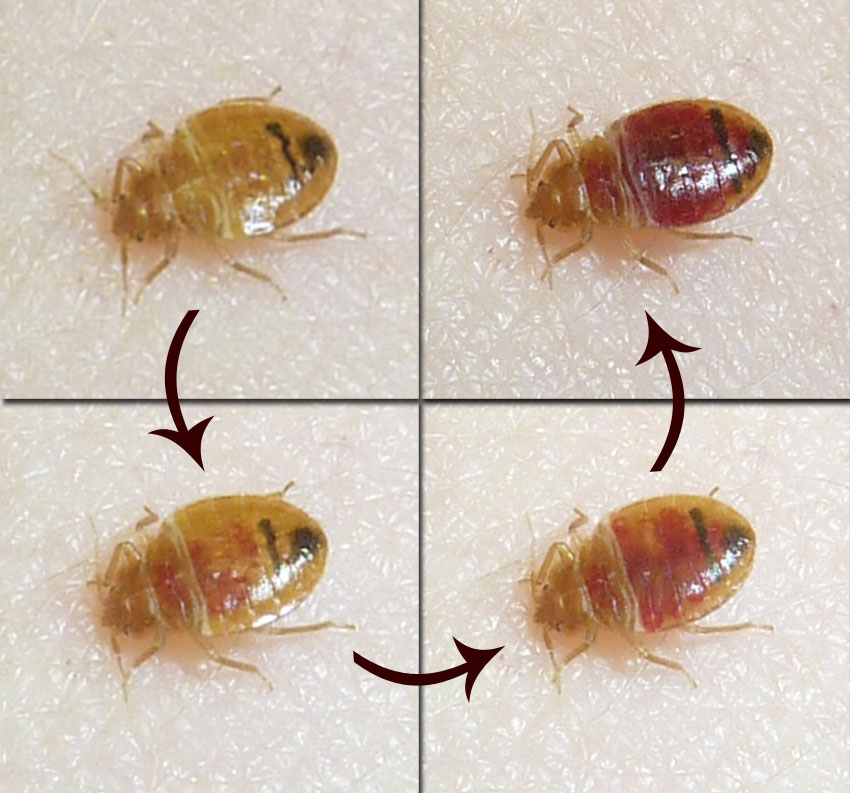
At What Stage Do Bed Bugs Reproduce?
Bed Bugs don’t typically live for more than a single year, so their age is normally counted in days. Each bed bug takes a slightly different amount of time in order to reach the various stages that lead up to adulthood.
For bed bugs, reaching the next stage in life depends upon getting a meal. A bed bug nymph goes through five stages before it becomes an adult. At each stage, Bed Bugs molt or shed their skin, in order for that to happen, the bed bug must have a blood meal.

No matter what you’ve heard, Bed bugs cannot reproduce until they reach full adulthood, and that means going through all five nymph stages. The final stage is the age when they are fully mature and able to reproduce.

How do we measure this in terms of time? Normally, a bed bug, whether nymph or adult, feeds about once per week under ideal conditions. Given that molting schedule, a nymph can reach adulthood and begin reproducing in about 5 or 6 weeks. Truth is, the time to adulthood can vary.
Some nymphs feed often enough to reach reproductive age in as little as 3 weeks. This happens under ideal conditions, which include a relatively warm environment and easily accessible food source (YOU). In less than ideal conditions where the temperature is cooler or blood meals are less frequent, the nymphs can survive for quite a while in between meals, stretching out their time before full maturity. In this situation, it may take 4 months before a nymph is fully mature.
How Do Bed Bugs Reproduce?
Female bed bugs are fertilized by males and lay eggs. Male bed bugs take their cue to mate whenever they recognize that a recently fed bed bug is nearby, regardless of whether the passing bed bug is female. Nymphs and male bed bugs secrete a pheromone that attempts to prevent mature males from penetrating them. The occasional non-fertilizing mating session, however, does not stop the massive explosion of an established bed bug population, thanks to the female ability to lay multiple batches of eggs once fertilized.
The Bed Bug reproductive process is called traumatic insemination, or hypodermic insemination. The male Bed Bug pierces (stabs) any part of the abdomen of the female bed bug with a hardened sex organ and then releases sperm into the abdomen.
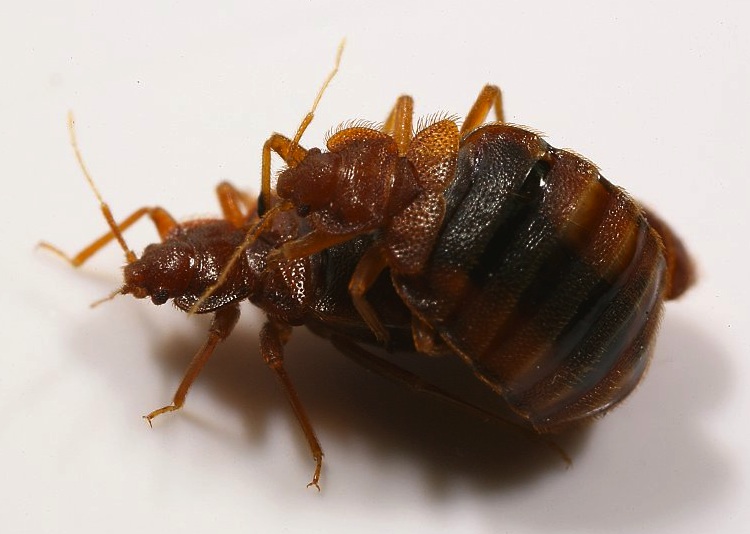
How Many Eggs Do Female Bed Bugs Lay?
Fertilized female bed bugs can lay about 3 to 5 eggs a day, usually 1 at a time, and most lay around 250 eggs in their lifetimes, but others can lay over 500. The good news, if there are any when we think of Bed Bugs, is that females that mate more frequently, especially in a short period of time, develop scar tissue that makes it difficult to lay eggs. This results in the females laying fewer eggs at a time, which can help when we go to eradicate them. Another thing about female Bed Bugs is that mating increases their chance of infection and death.
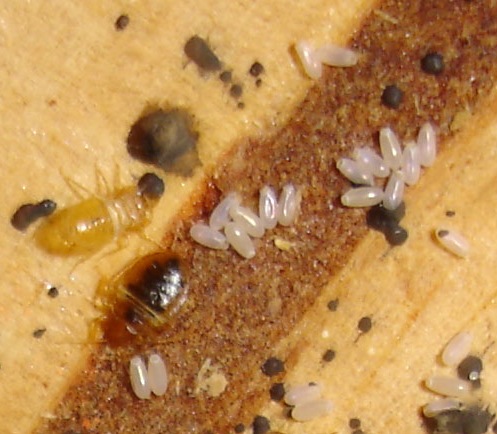
To combat this, the fertilized female Bed Bug usually leaves their original colony and find a new location with access to food and avoid getting stabbed to death by the males. Once there, they will start laying their eggs.
After fertilization, the female Bed Bug can lay eggs for up to 7 weeks and usually lays multiple batches during this time. Even when moving to a new location, she can be fertilized by any of her male offspring after they reach maturity, which takes anywhere from 3 weeks to 4 months.
How Much Time For Bed Bug Eggs To Hatch?
The exact amount of time it takes for bed bug eggs to hatch depends on the environment, especially the temperature. On average, eggs hatch in about 1 to 2 weeks, though it can sometimes take a little longer. Eggs will hatch sooner in ideal situations or warmer environments.
Female Bed Bugs normally lay their eggs somewhere hidden so they are safe. Usually behind headboards or in the inside corners of dressers. Each egg has a sticky, natural adhesive substance on its exterior, which keeps it in place and undisturbed. Bed bugs normally stay close to the host they feed on, and they will lay their eggs nearby, but in a place that is unlikely to be moved or disturbed.
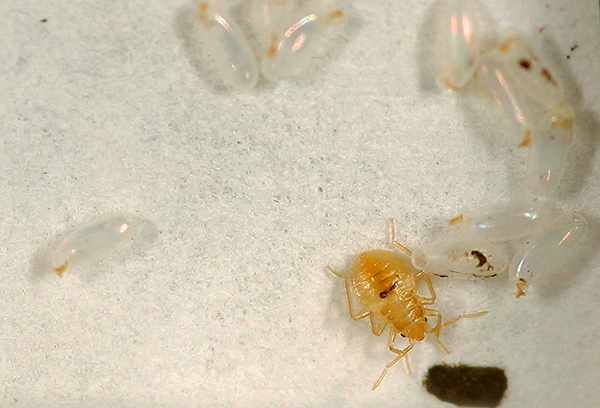
How Often Do Bed Bugs Lay Eggs?
Unlike birds, bed bugs do not need to tend their eggs once they lay them. Female Bed Bugs do not have to wait 2 weeks for one set of eggs to hatch before laying more. This means that even if you get rid of all the living bugs, your infestation will return if you did not destroy all of the eggs. This can be quite a job given that the eggs are smaller than sesame seeds, usually well-hidden in a dark space, and maybe in a different location from where you spotted the adults.
The eggs may also be somewhat spread out because the female bed bug can lay eggs one at a time. Vacuuming can’t always be a sure physical removal technique, to get rid of bed bug eggs.
Female bed bugs that look for a new location after fertilization have a greater chance to lay more eggs because they escape the trauma of further mating sessions. Female bed bugs also need to have eaten recently in order to be appealing for a male to mate with, and they must continue feeding in order to lay the eggs they carry. It is possible for a fertilized female to lay up to 5 eggs every day.
How bed bugs reproduce seems somewhat disorderly, given the varying ages of maturity for bed bug nymphs as well as the damage caused by insemination. Despite all of this, bed bugs reproduce at an incredible rate, fast and silently taking over your home. Understanding just how easy it is for them to increase their numbers and spread to multiple locations, you can see how important it is to destroy all bed bugs, including the eggs, if you intend to eradicate an infestation.







